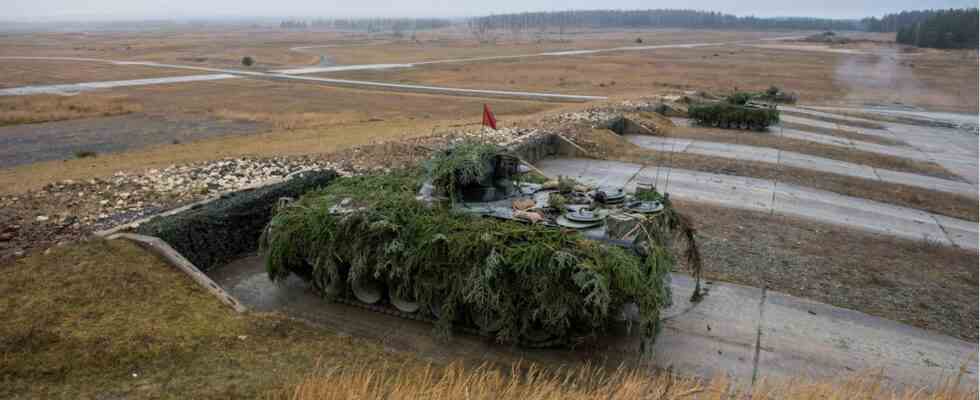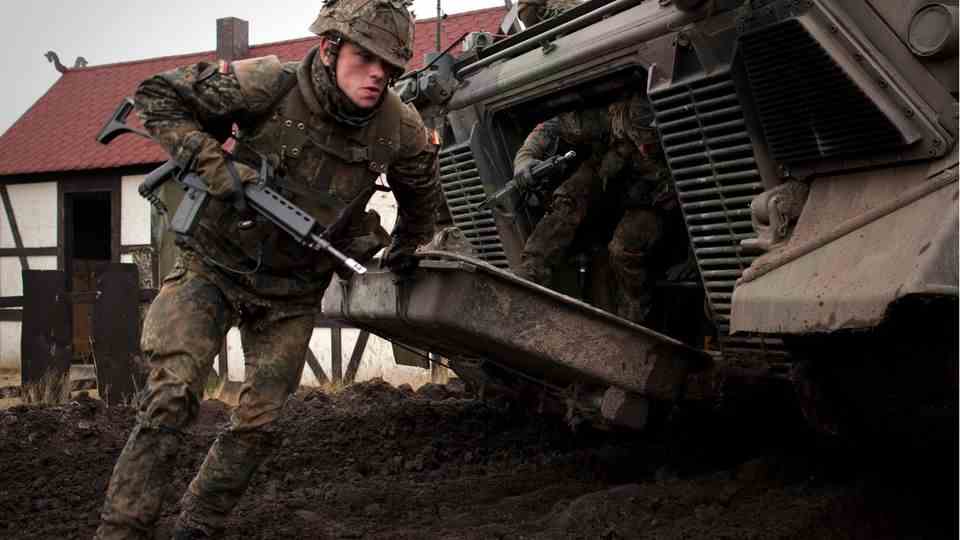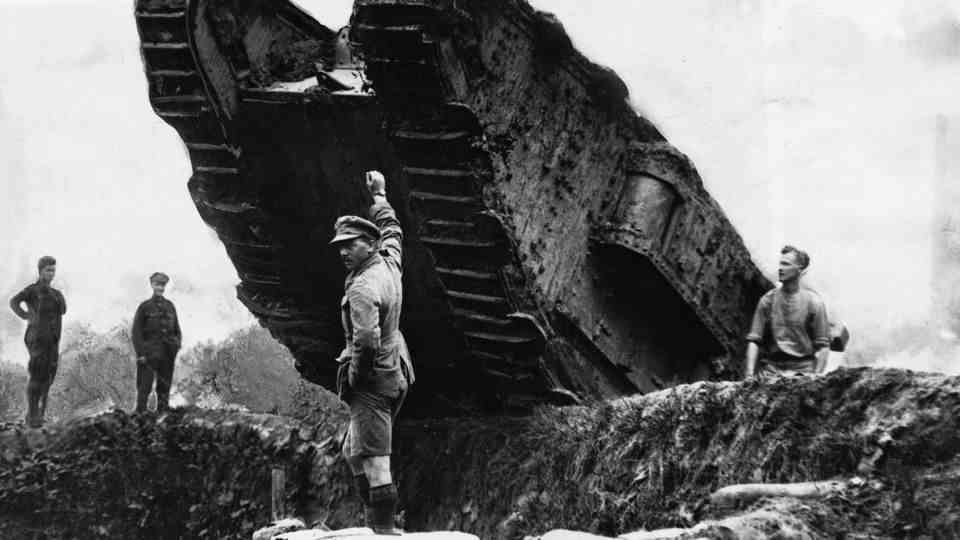German tank construction
Marder armored personnel carrier – how the oldie of Ukraine could benefit
Marten during shooting practice.
© Armin Weigel / Picture Alliance
The Marder is a Cold War infantry fighting vehicle. He is still on duty and could help Kyiv transition to mobile warfare.
In addition to Leopard tanks, Gepard anti-aircraft tanks and the Panzerhaubitze 2000, the Marder armored personnel carrier is also on Kiev’s wish list. Rheinmetall could supply 100 pieces from its own stocks. Like the Leopard 1, the Marder is getting on in years. Last year he celebrated his 50th birthday.
But while other military equipment from that time has long since been retired, the Marder is still in service with the Bundeswehr. That means there are functional vehicles, spare parts and ammunition. A much more favorable situation than with oldies, which have stood on the meadow for the last 15 years and served as a home for mice.
And the year of birth 1971 can be put into perspective in two ways. On the one hand, the martens, which are still active today, have been modernized several times. And on the other hand, vehicles from the Cold War era are mostly being sent in the Ukraine war. The US is currently even air freighting M113s to Europe. In comparison, the Marder is a top-notch infantry fighting vehicle. The M113 served with the US National Guard, but offers little protection in a war. They were already considered obsolete in the 1970s.
Developed for the tank battle
The Marder was built during the Cold War. In it, the Panzergrenadiers should follow the main battle tanks. The Marten replaced the hapless HS-30. This Bundeswehr model was blessed with countless shortcomings and probably only owed its procurement to extensive bribes that led to the HS-30 scandal. The Marder is designed as an armored personnel carrier, which means it is intended to bring a group of infantrymen into battle. Due to its speed, the infantrymen should be able to follow the main battle tanks. The armor offers some protection, an autocannon fire support.
The concept wasn’t new. Already in the Second World War, the grenadiers followed the tanks in this way. But the vehicle itself was incomparably more powerful than the open-topped and inadequately protected armored personnel carriers of World War II, such as the Sd.Kfz. 250. In addition, the Marder was a significant advancement compared to the American M 113 with its steep walls.
Over 2000 pieces in service
The Marder relies on sloping armor, the engine is housed in front to protect the occupants. The grenadiers leave the vehicle through the stern gates. With 600 hp and a fighting weight of 35 tons, it is also well motorized. The infantry fighting vehicle is armed with a 20 mm cannon. However, the cannon could not pose a threat to other main battle tanks. Armament was quickly expanded to include Milan-type anti-tank guided missiles. As in the Second World War, variants for mortars and for tank hunting were developed on the basis of the base vehicle.
At the height of the Cold War, the Bundeswehr owned over 2,000 infantry fighting vehicles. Unlike the Leopard main battle tank, however, the Marder was not well received internationally, and as a new vehicle it was only exported in insignificant quantities.
Late combat use
Like most Cold War weapon systems, the Marder never saw the use for which it was built. As is well known, the mobile battle of large armored formations did not take place. Up to 15 armored personnel carriers were used in parallel in Afghanistan for this purpose. The experiences were rather mixed. In 2011, a marten near Kunduz was shot at with a simple RPG (Rocket Propelled Grenade) and caught fire. In June of the same year, an explosive charge of around 100 kilograms of explosives completely destroyed a marten.
The Marder was still popular with the crews, because alternative vehicles would not have offered better protection. The autocannon provided massive fire support and a sense of security. For the patrols in Afghanistan, the Marder was converted into a “mobile fortress” so that the grenadiers did not have to sit inside the vehicle, but could observe the surroundings from positions on the roof and fire on them. However, the operating conditions in Afghanistan were special. The insurgents there only had the old-fashioned RPGs and not modern anti-tank missiles like the insurgents in Syria. Not to mention heavy weapon systems.
In Germany before retirement
Despite several modernizations – increases in combat value – the heyday of the army’s workhorse in Germany is over. It should be all the easier to part with Bundeswehr stocks. To do this, the procurement of the successor Puma would only have to be accelerated. Even adjustments to the protection and the electronics cannot compensate for the outdated concept. In today’s armored personnel carriers, an unmanned and automated turret is usually used. Since there are no humans in the exposed tower, crew survivability increases. In addition, it is easier to develop different towers for one base. The marten is no longer planned for the future project of the army “Division 2027”. The extensive networking of the units on the battlefield takes place without him.






